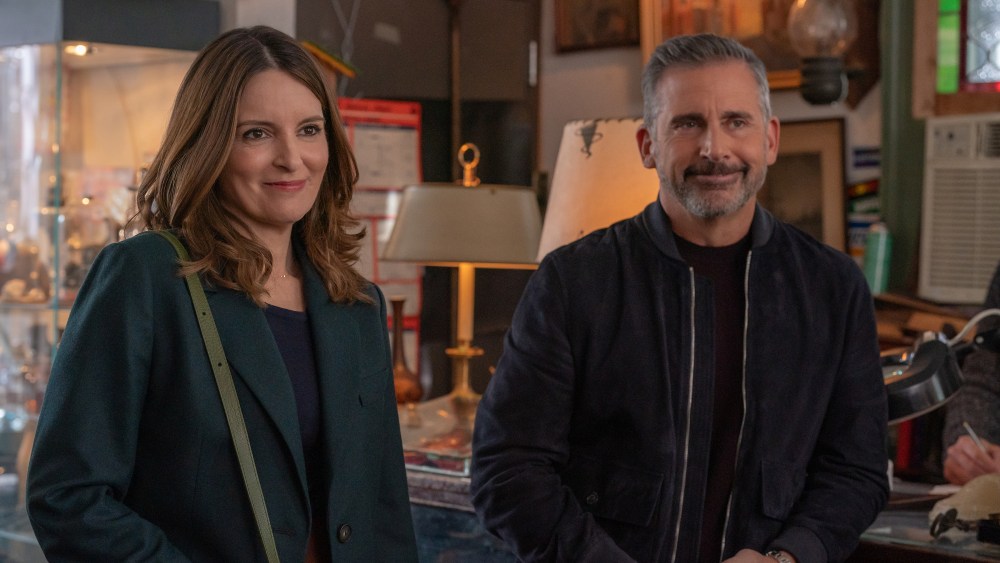Few writer-producers have a house style as distinct as Tina Fey’s — so much so that the “30 Rock” creator’s signature extends to an entire universe of shows under her umbrella. Fey did not have a showrunner’s direct control over “Mr. Mayor,” “Great News,” “Girls5Eva” or the Peacock revival of “Saved by the Bell,” but all of these series have a distinct family resemblance. They’re absurd, efficiently structured, joke-dense comedies, often soundtracked by a clarinet-heavy score from composer Jeff Richmond, who is also Fey’s husband. Richmond is just one of many names that recur across Fey projects, a consistent roster that both guarantees a shared DNA and cultivates experienced talent over time.
Fey’s latest effort, the Netflix miniseries “The Four Seasons,” partly extends this MO. Fey co-created the show with “30 Rock” alumnae Tracey Wigfield, who went on to spearhead “Great News” and “Saved by the Bell,” and Lang Fisher, who returns to Feyworld after co-creating the coming-of-age hit “Never Have I Ever.” (Fellow mainstays David Miner and Eric Gurian also executive produce.) Fey even stars as a grouchy, judgmental, Liz Lemon-scented woman embracing her middle age, alongside previous screen partners Steve Carell (“Date Night”) and Will Forte (Paul L’astnamé!).
But “The Four Seasons” also marks a sharp break from nearly two decades of tradition. For one, it’s an adaptation in a CV otherwise marked by original ideas, assuming the Vivaldi-inspired premise of the 1981 film written and directed by Alan Alda, who gets both a cameo and a producer credit in this update. (“Saved by the Bell” was technically a reboot, though in practice it was more like a total personality transplant that happened to carry over a few characters.) Fey’s repertory company expands to include newcomers Colman Domingo, Marco Calvani and Kerri Kenney-Silver. And most notably, the tone skews decidedly dramedic, trading a rapid pace of punchlines for a more melancholy take on long-term matrimony. “The Four Seasons” is ultimately able to deliver some astute insights into adult relationships, but also struggles to settle into this awkward new rhythm. The Fey brain trust is visibly working to expand its repertoire — an effort that, inevitably, comes with some growing pains.
“The Four Seasons” traces a year in the lives of three couples, broken up into four group trips that each get their own two-episode block. When Nick (Carell) announces his intention to leave Anne (Kenney-Silver) on the eve of their 25th wedding anniversary, it rattles both Jack (Forte) and Kate (Fey), who tend to affirm the state of their own union by commiserating over others’, as well as Danny (Domingo) and Claude (Calvani), whose opposing temperaments (Claude runs hot, Danny cold) are tested when Danny’s health problems lead the interior designer to bury himself in work. The ripple effect of Nick’s actions plays out over a weekend at a country home (Spring), an ill-fated stay at an eco-resort (Summer), a family weekend at a liberal arts college (Fall) and, finally, a ski vacation (Winter). Like a humbler version of “The White Lotus,” each getaway acts as a pressure cooker.
While Richmond is still credited with the series’ music, the soundscape of “The Four Seasons” is naturally dominated by the iconic classical compositions that give the show its name. In between the bursts of strings is mostly silence — and nothing will make you realize how important sound is to the Fey school of humor like its absence. Visually, “The Four Seasons” has the flat, slightly artificial look of a sitcom. (Three seasons are respectively helmed by Fisher, comedy fixture Oz Rodriguez, and married duo Robert Pulcini and Shari Springer Berman; Richmond and Domingo split duties for Fall.) Aurally, the show maroons sight gags like a pedal-powered booze bus or a clumsily staged piece of theater, leaving the viewer with mixed messages about how grounded this world is meant to be.
The questions raised by Nick’s decision, after all, are quotidian ones. Is he a coward for bailing on the work of lifelong commitment, or brave for charting a new path? Are his friends horrified by this textbook midlife crisis, down to the fancy sports car and younger girlfriend, or jealous of Nick’s freedom? The split also comes with more practical issues, like how the group should maintain separate ties with Nick and Anne now that the couples’ trip mainstays are no longer a couple.
The portrayal of Nick’s new flame Ginny (Erika Henningsen) is kinder than that of the literal children in Fey’s deliciously caustic “SNL” sketch “Meet Your Second Wife,” but only just. Before she’s rounded out into a full person, Ginny is a font of easy cracks about Burning Man attendance and beach yoga. Here, again, the muddled tone takes its toll: it’s fine for a purely comedic character to be a narrowly defined archetype, like the airhead assistant on “30 Rock,” but in a more serious context, the same approach risks being cruel.
“The Four Seasons” is more duly nuanced when it comes to other in-group dynamics. Most rewarding is the platonic bond between Danny and Kate, two jaded cynics whose lived-in rapport belies Oscar nominee Domingo’s recent addition to this crew of comedians. The openness of Danny and Claude’s marriage is also presented in a matter-of-fact way amid, if clearly separate from, their friends’ wrestling with fidelity. (The presence of a queer, interracial couple is one of the more major changes from the movie, but one that’s largely allowed to speak for itself.) Jack and Kate’s problems are more subtle and slow to emerge than the other pairs’; with brisk, half-hour episodes, this sometimes manifests in their tensions being spelled out rather than shown. “Everyone else gets the top-shelf version of your personality,” Kate sighs of her people-pleasing spouse. It’s a great line, but with so many other relationships sharing the spotlight, it’s the main way we learn about their particular woes.
Just as “The Four Seasons” starts to settle in and find its way, Fey, Wigfield and Fisher throw in a morbid twist the show is too unsteady to bear without buckling under its weight. Ever since “Scenes From a Marriage,” TV has proven an ideal medium for putting monogamy under a microscope; its length affords space to recreate the feeling of intimate companionship. Yet “The Four Seasons” can’t resist blowing up its mundane, if engaging, stakes — if not with jokes, then with a destabilizing turn. Fey & Co. aren’t yet as adept at prolonged character study as they are at pure comedy. Then again, they haven’t had nearly as much practice.
All eight episodes of “The Four Seasons” are now streaming on Netflix.
Read the full article here








